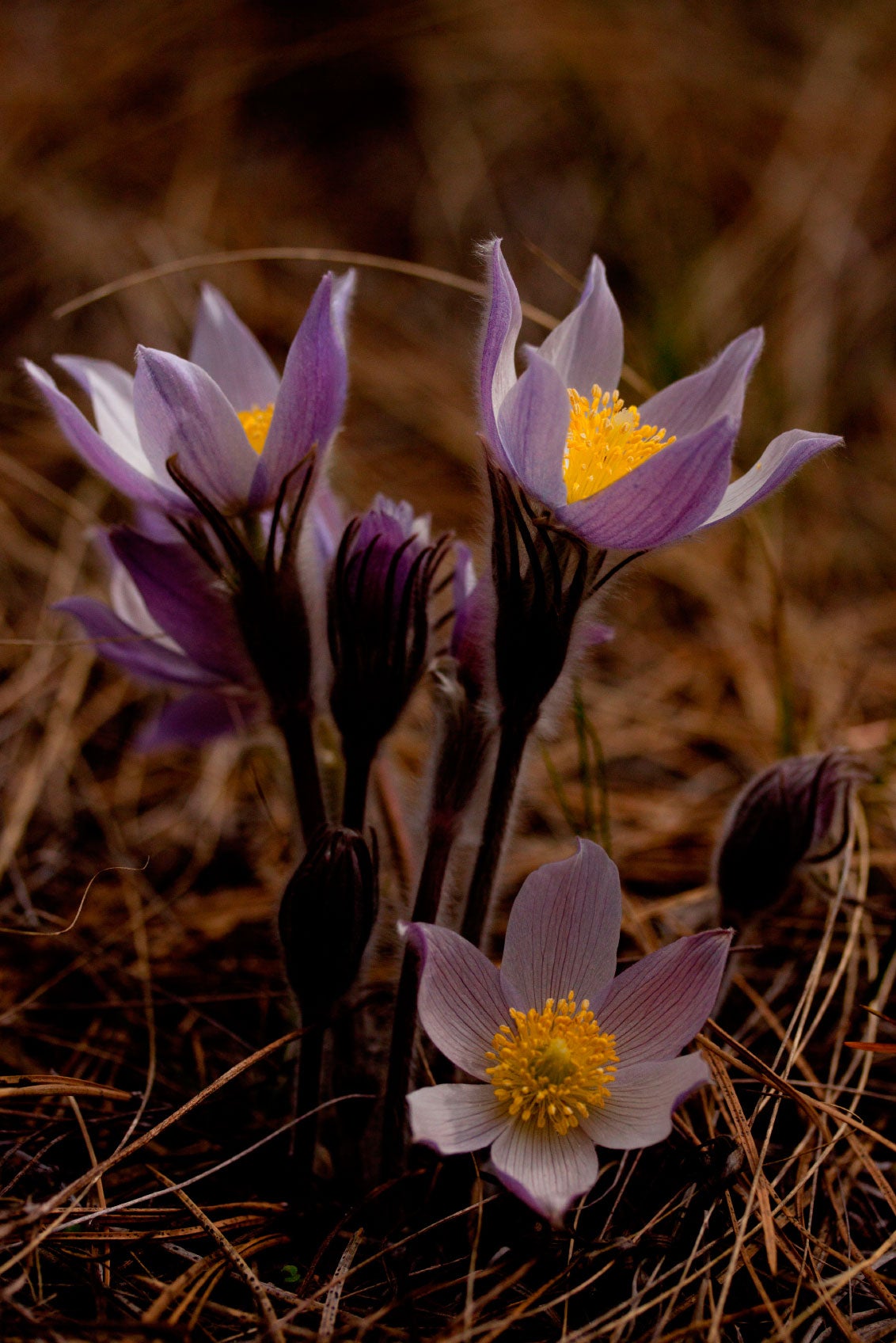Pasque Flower Care: Learn About Pasque Flower Cultivation


Growing Pasque flowers as part of a meadow wildflower display, in containers or as part of a border, allows for an advance glimpse of springtime's promise and a reminder of the tenacity of wild flora. Learn about Pasque flowers and cultivate these gems in your own landscape.
About Pasque Flowers
Pasque flower (Pulsatilla patens syn. Anemone patens) is the state flower of South Dakota and found across much of the northern United States. It is a prairie flower with an early appearance in spring, often peeking out of the snow. Pasque flowers appear in March and stay through April. The flowers are the first players on the stage, to be followed later by their foliage. Pasque flowers are perennial herbs also known as prairie smoke, goslinweed and prairie crocus. They are also linked to Easter, as the blooms are generally found at their peak during this holy time. Pasque flowers in the garden are ideal for rockeries, beds and containers. The flowers are usually blue to periwinkle, but sometimes take on tones closer to purple. There are also some white blooming plants. Flowers start out as upright, bell-shaped blooms and then become nodding flowers as they mature. The late arriving foliage has fine white hairs sprinkled across the surface of each leaf, giving the impression of silvery tinges.
Pasque Flower Cultivation
The native forms are found dancing across rocky landscapes and rough terrain in prairies. They are drought tolerant and grow in clumps in full sun. Truly terrible soils to rich, juicy loam are the best locations for Pasque flower cultivation. In other words, the plants are not fussy and perform well as long as the soil is well draining. You can find starts at native garden centers or extension plant sales. You can also order the seeds and sow them inside six weeks before the date of the last frost. Seed heads are showy and should be harvested when ripe and stored in a dry location until time to sow. Stem cuttings are a quicker way to achieve mature plants. Winter is the best time to take cuttings when foliage has died back and the plant is not actively growing. Situate the plants in a sunny location with little competition from other species.
Pasque Flower Care
As a wildflower, Pasque flowers are hardy and self-sufficient. Their only complaint is sodden soil and water logging. The plants will self-seed and eventually produce a field of the lovely blooms if allowed to self perpetuate. Provide water only in cases of extended drought for Pasque flowers in the garden. Pasque flower care in containers will require supplemental water, but allow the surface of the soil to dry out in between irrigations. Pasque flowers are not heavy feeders but container plants do benefit from an early season liquid plant food. The plants need a winter dormancy period to bloom successfully in spring. For this reason, growing Pasque flowers in USDA plant hardiness zones 9 and above is not recommended.
Gardening tips, videos, info and more delivered right to your inbox!
Sign up for the Gardening Know How newsletter today and receive a free copy of our e-book "How to Grow Delicious Tomatoes".

Bonnie Grant is a professional landscaper with a Certification in Urban Gardening. She has been gardening and writing for 15 years. A former professional chef, she has a passion for edible landscaping.
-
 Looking For Plants To Give You The Soft And Fuzzies? Try These 5 Fuzzy Leaf Plant Options
Looking For Plants To Give You The Soft And Fuzzies? Try These 5 Fuzzy Leaf Plant OptionsLovers of texture, drama, silver foliage and tactile plants will adore these special sensory garden additions. These fuzzy leaf plant options will leave you all aglow
By Susan Albert
-
 Get Ready For A Summer Of Hummers! Grow These Full Sun Hummingbird Plants and Flowers
Get Ready For A Summer Of Hummers! Grow These Full Sun Hummingbird Plants and FlowersIf you’re lucky enough to enjoy a sunny backyard, make sure you are maxing out on your pollinator opportunities and grow these full sun hummingbird plants and flowers
By Tonya Barnett